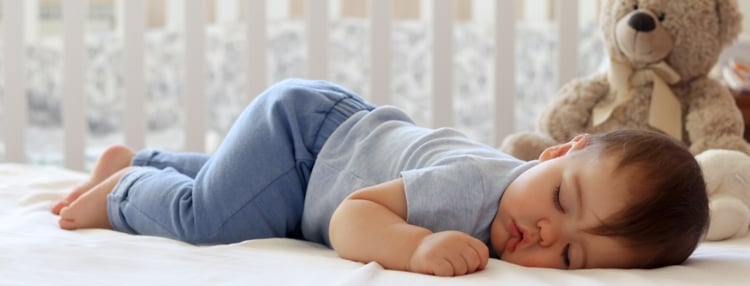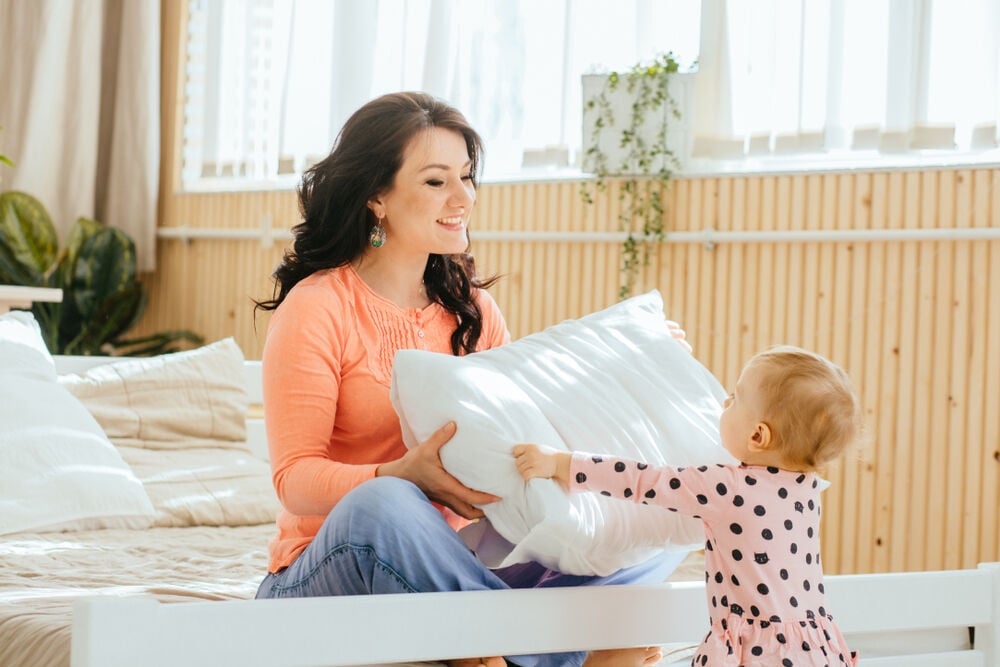Have concerns regarding sudden infant death syndrome (SIDS) prevented you from placing a pillow or blanket in your infant’s crib? Join Flo as we explore the issue further and review professional recommendations and guidelines.
-
Tracking cycle
-
Getting pregnant
-
Pregnancy
-
Help Center
-
Flo for Partners
-
Anonymous Mode
-
Flo app reviews
-
Flo Premium New
-
Secret Chats New
-
Symptom Checker New
-
Your cycle
-
Health 360°
-
Getting pregnant
-
Pregnancy
-
Being a mom
-
LGBTQ+
-
Quizzes
-
Ovulation calculator
-
hCG calculator
-
Pregnancy test calculator
-
Menstrual cycle calculator
-
Period calculator
-
Implantation calculator
-
Pregnancy weeks to months calculator
-
Pregnancy due date calculator
-
IVF and FET due date calculator
-
Due date calculator by ultrasound
-
Medical Affairs
-
Science & Research
-
Pass It On Project New
-
Privacy Portal
-
Press Center
-
Flo Accuracy
-
Careers
-
Contact Us
A Baby Pillow: Convincing Reasons Why Your Baby Doesn’t Need One


Every piece of content at Flo Health adheres to the highest editorial standards for language, style, and medical accuracy. To learn what we do to deliver the best health and lifestyle insights to you, check out our content review principles.
Is it safe to use an infant pillow?
It’s common practice to put a newborn to sleep in a crib that’s free of pillows, blankets, and other bedding. But when is the right time to start introducing these items?
Many retailers now offer a wide range of bedding options, manufactured with your baby’s specific needs in mind. Pillows, for example, are usually smaller, firmer, and flatter than a typical adult pillow.
Although you may have a tough time imagining your bed without your favorite pillow and comforter, remember that your little one’s been sleeping on nothing but a mattress since birth. Reducing their chances for developing SIDS is far more important.
What is SIDS?
SIDS, also known as cot death, is the sudden, unexpected, and unexplained death of a healthy child under the age of 1. It’s the leading cause of infant mortality between 1-month-olds and 1-year-olds. More than 90 percent of SIDS cases occur during sleep.
Babies are especially susceptible in their first six months, if they were born prematurely, or with a low birth weight. It also happens slightly more frequently with boys than girls.
The exact cause of SIDS is still unknown, but popular theories cite a “lack of arousal response.” This produces a prolonged period of apnea, hypoxia, and sudden death.
That’s why it’s critical to stay away from heavy bedding which can entangle a sleeping infant, leading to overheating and suffocation.
Flat head syndrome and alternatives to a newborn pillow
Since newborns tend to sleep in one position, they’re prone to a condition known as plagiocephaly. Put simply, it’s when a flat spot develops on the side or back of an infant’s head. It also occurs as a result of premature or multiple births, or wrong positioning in the uterus.
Skull bones will not fuse and harden until several months after birth. This aids in both delivery and brain development. Therefore, the shape of your baby’s head can readily change, particularly if they spend a lot of time lying or sleeping the same way.
Nevertheless, the best method for protecting them from SIDS is by putting them on their back, with their feet at the end of the crib. Lessen side effects such as flat head syndrome by taking the following steps:
Alternate the direction in which their head is turned (one night to the left, the next night to the right, etc.).
Balance things out by scheduling periods of supervised tummy time during the day. This is even safe to do with newborns, for no more than 3 to 5 minutes, two or three times a day. Gradually increase sessions to an hour.
Lastly, whenever possible, try to keep them upright, instead of letting them recline in a crib, baby swing, or car seat.
When to use a baby pillow

Until they’re a year old, your baby should sleep on a flat surface, covered with only a fitted sheet. This means no pillows, blankets, or other bedding.
However, experts agree that even after their first birthday, there’s still no compelling reason to introduce a baby pillow to their crib.
Pediatricians actually recommend waiting until your child’s graduated to a regular bed before providing a pillow. This usually occurs sometime between the ages of 18 months and 3 years.
How to choose a baby pillow
When the time finally comes, try to stay away from fluffy, novelty pillows. Instead, opt for a product designed with kids in mind.
It should be smaller in size than a standard adult pillow (think airline pillow), while also being very firm. Furthermore, you can skip the pillowcase to limit the amount of fabric on your child’s bed.
Your little one’s safety and well-being are always the top priority. Do everything you can to lower their chances for SIDS, and remember to follow these best practices when shopping for a baby pillow.
Take a quiz
Find out what you can do with our Health Assistant


Hey, I'm Anique
I started using Flo app to track my period and ovulation because we wanted to have a baby.


The Flo app helped me learn about my body and spot ovulation signs during our conception journey.


I vividly
remember the day
that we switched
Flo into
Pregnancy Mode — it was
such a special
moment.
Real stories, real results
Learn how the Flo app became an amazing cheerleader for us on our conception journey.




